by Barbara Dixson
What could get 40 people out of their cozy homes and into the woods on a Saturday morning in April, when the temperature is below freezing and the wind is gusting hard? Earth Day tree planting! As Brittany Kaminski, pictured above with her 4 1/2 year old daughter Brielle, told me, “I wanted her to participate in an Earth Day event.” Brielle said she was having a good time, and showed me her muddy hands and knees to prove it.
There were around 400 tiny trees, along with the wire cages and plastic tubes required to protect these little ones from voles and deer. Two hundred and fifty of these were gifted to Schmeeckle Reserve by the UWSP Office of Admission and Recruitment in honor of the incoming class of 2024. How do you determine what kind of trees to order from the native plants nursery? Schmeeckle staff, advised by Professor Mike Demchik and consulting with the officers of the UWSP Society for Ecological Restoration (SER), had three criteria: the trees must be native, they must fit the habitat, and if possible they must benefit Schmeeckle’s wildlife. Since the trees were to be planted in three rather different areas of the Reserve, quite a few varieties were included, such as grey and red osier dogwoods, cottonwoods, river and paper birch, aspen, black elderberry, and high bush cranberry.
With students, staff, UWSP employees, Friends of Schmeeckle Reserve, SER members, and community members at work, all 400 trees were successfully planted!
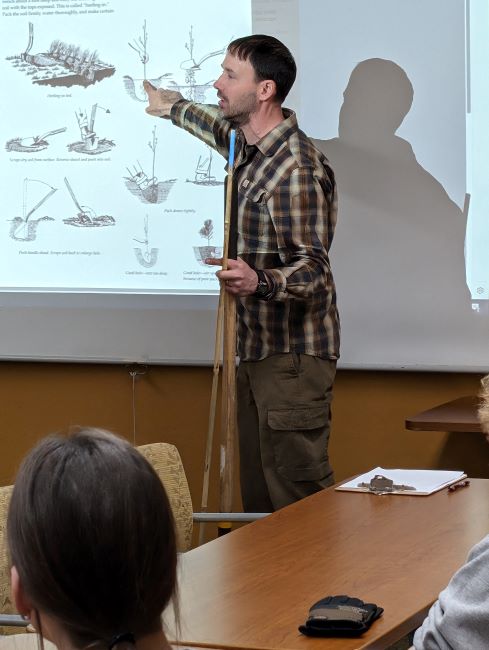
We gathered in the Schmeeckle Visitor Center, where Jim Buchholz, director of the Reserve, explained the steps for planting–stakes, poles, tubes, wire cages, water, mulch, all to nurture tiny trees.

Gary Speckmann, vice president of the Friends of Schmeeckle Reserve, delivers tubes to volunteers.
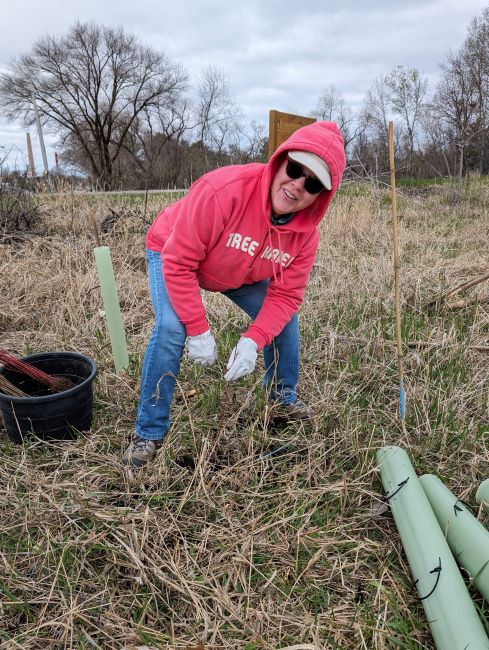
Denise Czaikowski, along with her husband, Paul, plants black elderberry at the southwest corner of the Reserve. She and Paul came last year, when it was just as cold, she notes, but it’s fun to help out.
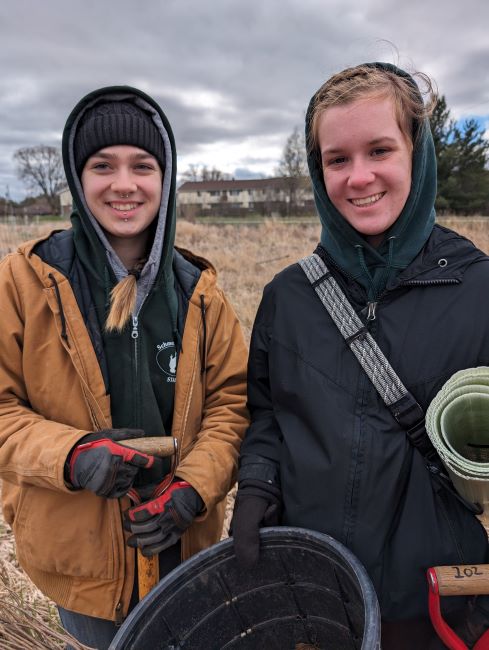
Kayla DeFranco (left) and Alice Maas get underway with all needed supplies. They are both part of SER and Kayla is also part of the Schmeeckle ecological restoration crew.
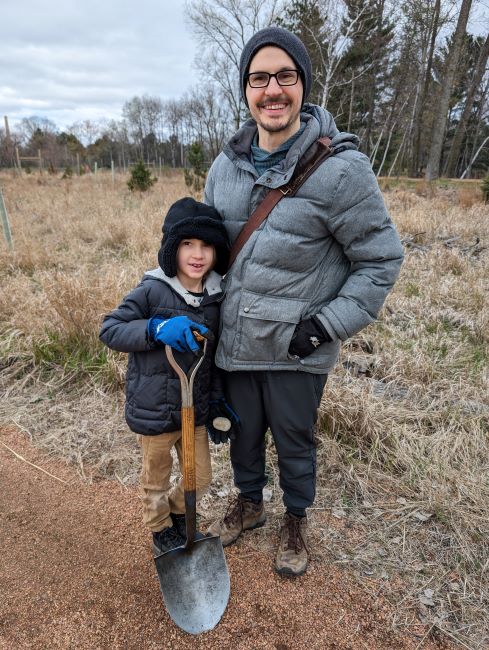
UWSP photographer Lee Vaughter has an excellent assistant in his son Wesley.

Ish Odogba, who works in regional planning for UWSP, is interested in urban forestry, and takes on the morning’s full range of planting jobs.

Mike Demchik has been in consultation with the directors of Schmeeckle Reserve over many years as they’ve planned and implemented ecological restoration in the Reserve. Mike lauds the many constituencies who have helped transform the ecology: the Friends of Schmeeckle Reserve, the Society for Ecological Restoration, Fire Crew, those who come for Mike’s chainsaw trainings, and the Reserve’s restoration crews. Wow!

Those present listened attentively, as the room filled and people leaned in from the hall.
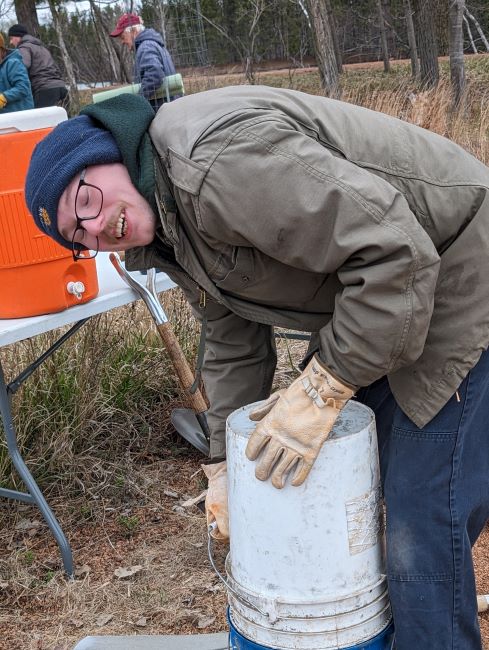
Griffin Bray struggles to separate mulch and water buckets. Schmeeckle’s graduate assistant for the last two years and creator of the summer day camp program, Griffin will be sorely missed as he graduates this spring!
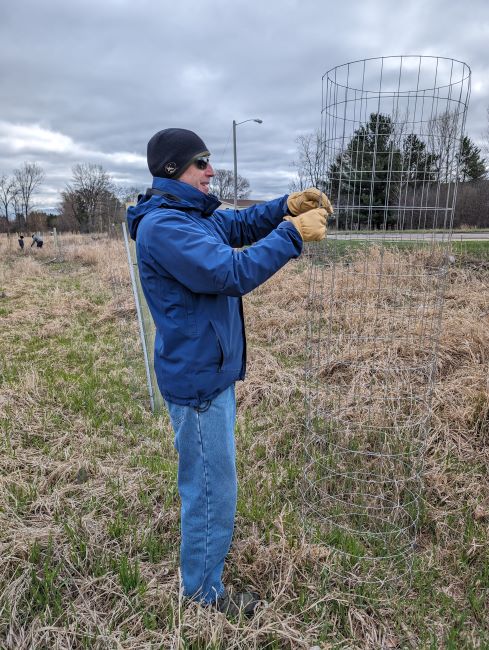
Erik Lacey assembles a wire cage–work gloves definitely needed! Erik: “Schmeeckle is a fabulous resource!”
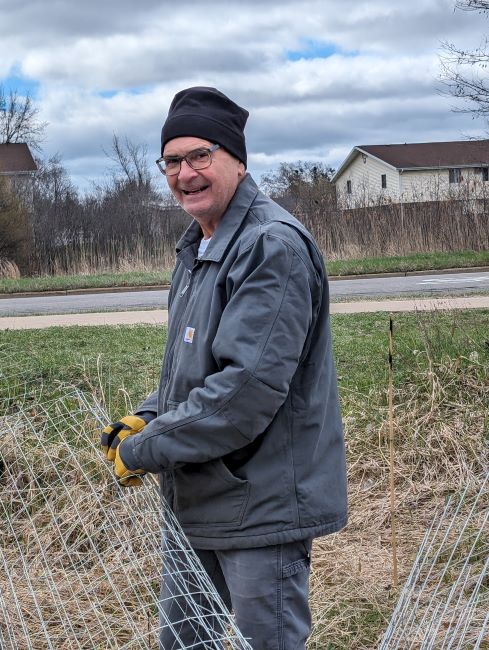
Karl Wolf also puts wire cages together, deerproofing the trees he and Erik are planting along Maria Drive. Karl planted trees last year, and says it was so much fun that he wanted to come back.

Peter Fee gets his gear and saplings ready to go. Peter has been coming to Schmeeckle since it opened, when he was a kid.

Jerry Lineberger enjoys setting up needed materials. As past-president of the Friends of Schmeeckle Reserve, Jerry has a hand in pretty much everything.
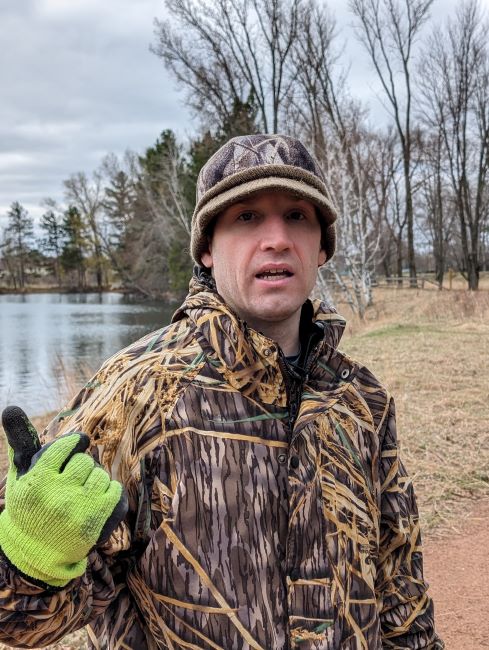
Sam Lang, as alderperson for Stevens Point’s District 9, has been very concerned about pedestrian safety along West River Drive. He dreams of trails and boardwalks, and has come today to look for inspiration.
